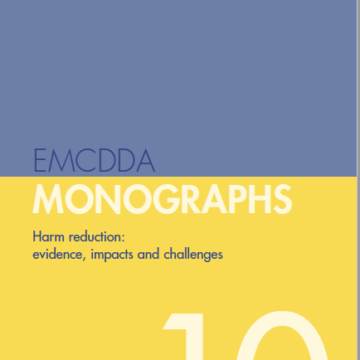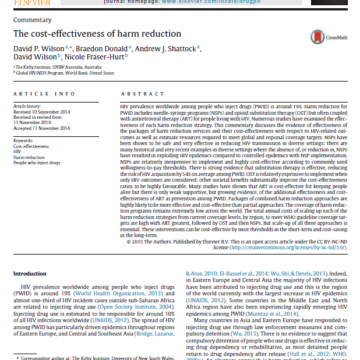WHAT IS HARM REDUCTION?
“Meeting people where they’re at.”
Since Northreach’s inception in 1987, we have been providing services to Northern Alberta from a Harm Reduction philosophy. The availability of our programmes are a necessary public health response to prevent the transmission of the HIV and Hepatitis C virus – while also minimizing the harm associated with substance use in our society. Harm Reduction refers to “policies, programmes and practices that aim primarily to reduce the adverse health, social and economic consequences of the use of legal and illegal psychoactive drugs without necessarily reducing drug consumption. Harm reduction benefits people who use drugs, their families and the community” (source). The Public Health Agency of Canada defines Harm Reduction as:
- meeting people where they are at and supporting them to work towards their goals;
- aims to decrease adverse health, social and economic outcomes – such as death, disease and injury – that may result from an individual’s actions;
- represents policies, strategies, services and practices, which aim to assist people to live safer and healthier lives;
- acknowledge that each person is different, has different goals and requires different supports and strategies;
- enhances the ability of people who use substances to have increased control over themselves, their families, and their communities; and
- is not focused on the reduction of substance use and/or abstinence as necessary to receive respect, compassion or services (source).
As an organization, we believe that time and effort spent in the elimination of “high-risk” behaviours (such as drug use) would be better spent working with affected individuals to find ways to reduce immediate harms or associated negative consequences. After all, society keeps changing what “high risk” behaviours are defined as, but these behaviours are very consistent with humans across time. If we look at our past, we can see how alcohol prohibition, abstinence-only sex education, and the very widespread D.A.R.E. program based around “just saying no”, does not work. This programming has not only failed but has been associated with higher levels of crime, higher public expenses, and sometimes increases in the “high-risk” behaviours in question (source, page 19).
The approach of Harm Reduction was never meant to be used as an opposite to abstinence only programming, but the heated discussion usually comes from individuals and society focusing on the “high-risk” behaviour. Whether this is a moral stance or whether they should be tolerated. Unfortunately this black and white thinking creates a division between two sides instead of allowing open discussion and potential solutions. Instead, we must look at how Harm Reduction actually complements abstinence-based goals (source, page 23).
Harm Reduction strategies neither encourages or discourages abstinence based goals, as long as the individual is behind the goal, accepting of the goal and no additional harm is done. Harm Reduction does not push abstinence nor does it go out of its way to go against abstinence because of this is done, further harm may come to the individual. This is proven through literature around supportive housing and homelessness (source).
Supportive housing and Harm Reduction
It has long been thought that non-abstinence based housing would enable substance use to the clients in supportive housing programming. These requirements have been questioned as a human rights violation because individuals who are homeless and who cannot or will not stop using are unable to access housing. On the flip-side, low-barrier, non-abstinence based, supportive housing that offers Harm Reduction based services increase quality of living benefits to not only the individual level but to the local community and larger society. How could this be?
On the individual level, residents have stable, permanent housing and would rather be housed than on the street. Also, despite non-abstinence-based programming, they use less substances with reduced harm in their day-to-day lives (source).
On the community level, residents report a strong sense of belonging and mutual support in their housing (source).
On the societal level, there have been significant reductions in publicly funded health care and public health costs. In the study, “Participants had total costs of $8,175,922 in the year prior to the study, or median costs of $4066 per person per month. Median monthly costs decreased to $1492 and $958 after 6 and 12 months in housing, respectively” (source).
COST-EFFECTIVENESS
Many studies have looked at the effectiveness of each harm reduction strategy (needle/syringe programs, opioid substitution therapy, supervised consumption sites and antiretroviral therapy). We now have thirty years of research proving the effectiveness and cost effectiveness of these strategies. In every case researched, these programs were shown to be cost effective.
Needle-syringe programs
A study in New Zealand has calculated that for each $1 spent on a needle-syringe program there is a $20 saving in lifetime treatment costs (source) and an Australian study says that these same programs are effective in reducing the incidence of both HIV/HCV and that they represent an effective financial investment by government (source). NSPs are very inexpensive. The average cost is $21-$71 per person per year. Given how low the cost, and the evidence of how effective, this is one of the most cost effective public health methods ever (source).
In a study of 81 cities across Europe, Asia and North America, researchers found that HIV prevalence increased by an average of 5.9%/year in the 52 cities without needle-syringe programs, compared to a decrease by 5.8%/year in the 29 cities with needle-syringe programs (source).
What does this mean for cost? Needle-syringe programs are cost saving when compared to the lifetime costs of HIV medications. Needle-syringe programs reduce the incidence of HIV by up to 74% over 10 years – return investment between $1.3 to $5.5 for every $1 invested (source).
Opioid substitution therapy
Opioid Substitution Therapy (methadone/suboxone treatment) is offered at both Levitee and at the Alberta Health Services (AHS) Opioid Dependency Program in Grande Prairie. Opioid Substitution Therapy is more expensive than needle-syringe programs at approximately US$363-$1057 per patient per year for methadone and US$1236-$3167 per patient per year for suboxone (buprenorphine). Even though these costs are higher, it still has a savings of between US$3324-$7000 per HIV infection avoided. If we think outside of HIV related costs and look at others such as the number of relapses an individual will not have and no jail time for drug-related charges, the cost is much lower (source).
Supervised consumption services
When it comes to Supervised Consumption Services, a recent study in Vancouver says “through the use of conservative estimates, Vancouver’s supervised injection facility, Insite, on average, prevents 35 new cases of HIV and almost 3 deaths each year”. This provides a societal benefit in excess of $6 million per year after the program costs are taken into account, translating into an average benefit-cost ratio of 5.12 : 1 (source).
SUGGESTED READING


